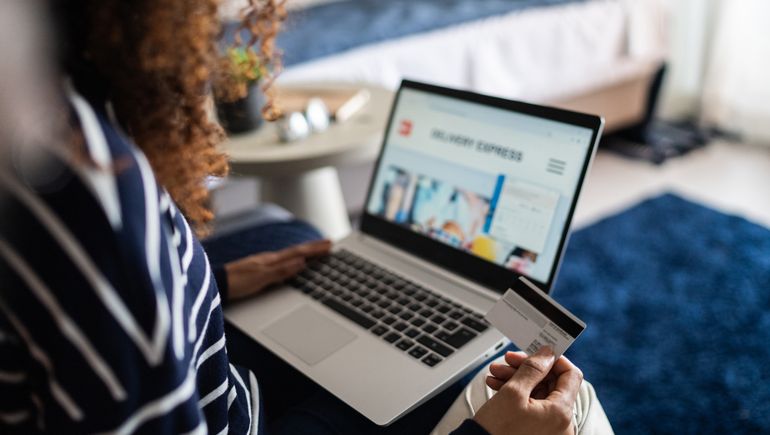The checkout experience is a pivotal point of transformation for e-commerce retailers. If you’re not already treating it that way, it’s time to rethink your position.
Here’s why: Retailers have always known they have to be flexible and responsive to changes, both in the industry and in the needs of customers. But the pace of change over the last decade has taken things to a new level—a complete reset, according to BCG analysts.
These changes have origins in the coronavirus pandemic, but also in advanced developments in e-commerce technology. What’s now possible for the checkout experience has completely changed.
“When it comes to commerce technology, retailers no longer have to decide between the false binary of microservices and monoliths,” explains Ilya Grigorik, principal engineer and technical advisor to the CEO at Shopify. “Today, the technology is available that allows retailers to pick from tried-and-true tested components, including the checkout experience, and build your store your way—with the benefits of both worlds.”
Rising paid advertising and customer acquisition costs mean every lost percentage point costs even more than usual. Merchants that aren’t capturing the optimal conversions are leaving money on the table. This doesn’t have to be the case anymore. We now have powerful e-commerce solutions that give small and large retail businesses the versatility and scalability they need to deliver a world-class checkout experience.
Shopify partnered with BCG to identify the elements of a high-converting checkout experience. Here’s a look at what it takes to build one:
Zero in on the biggest impact
There’s no single variable that explains conversions (or missed conversions, for that matter). However, data does point to five ways retailers can boost cart conversions at checkout. These lead to conversion uplifts of:
- Up to 50.4% by offering accelerated payment methods like Meta Pay, Amazon Pay, PayPal, Shop Pay, Apple Pay and Google Pay
- Up to 18.9% by offering simplified checkout flows
- Up to 15.5% (at the expense of total traffic) by offering customer accounts and subscriptions
- Up to 7.7% based on device type
- Up to 3.5% based on apps and customizations
How you mix and match elements of the checkout experience can have a significant impact, and there’s a lot of opportunity to grow for retailers that have not optimized it.
“The study reveals what we have built for and always known to be true,” says Shopify president Harvey Finkelstein. “Drivers like an optimized checkout experience. The use of accelerated payment methods and selection of relevant customizations have a dramatic impact on conversion.”
Understand the role of speed and trust
Customers increasingly expect to move through their checkout experience quickly and easily. If they’ve reached this stage, they’ve worked through multiple steps, and if any one of them doesn’t work in a way that feels secure and convenient, they may decide to abandon the cart. Auto-fill for shipping and billing information (enabled by more than 99% of stores when available, in this study) is a helpful way to move customers through the process faster.
As important as speed is, it must be balanced with displays of trust and security. For example, fraud monitoring and detection systems can play a powerful role in protecting both the merchant and the customer. But if they impede the flow of checkout, it can be more disruptive than helpful. The study found that autofill is essential for conversion uplift, but the presence of Captcha, a tool that tests if a user is human or a bot, deters some customers from continuing to checkout.
One CEO of a small retailer put this dance between speed and trust perfectly: “Keep the customer targeted on completing checkout, and avoid asking for information you don’t need; you don’t want the customer asking questions or building doubt.”
Adjust expectations to retailer size and average order value
One interesting finding of the report is that the size of the store (in revenue) led to different results for customizations and checkout experiences. This can be important for retailers to understand as they grow from small to medium to large, or as they craft plans for viral or seasonal growth.
For example, the conversion uplift impact of checkout customization varies, but it’s especially noticeable for stores with a revenue of $10 million or more. Simply customizing a checkout flow does not seem to generate a lift in conversion across most stores, but there is a lift in lower funnel conversion for stores with at least one customization and $1 million in revenue (see chart).
In another example, we see that conversion rates tend to rise as overall revenue rises, but then tend to decline as a seller matures (or as the average order value increases).

The nuances of operating a retail store of a certain size influences the ways you invest in your checkout experience. Just consider a store with an annual revenue of $100 million and 53 million unique customer sessions. Improving that store’s lower funnel conversion rate by just 1% could generate an incremental $6 million per year. Investing responsibly across the funnel can clearly boost the bottom line without corresponding increases in marketing costs.
Getting customers across the finish line
With a landscape in constant flux, tools that facilitate adaptability and responsiveness are crucial for brands. This is especially true when it comes to the end of the customer journey and the conversions you need to drive in order to increase sales. By harnessing flexible solutions that make it easier for customers to complete their purchase, businesses can keep their focus on what they do best—producing top-tier products and building a world-class brand.




